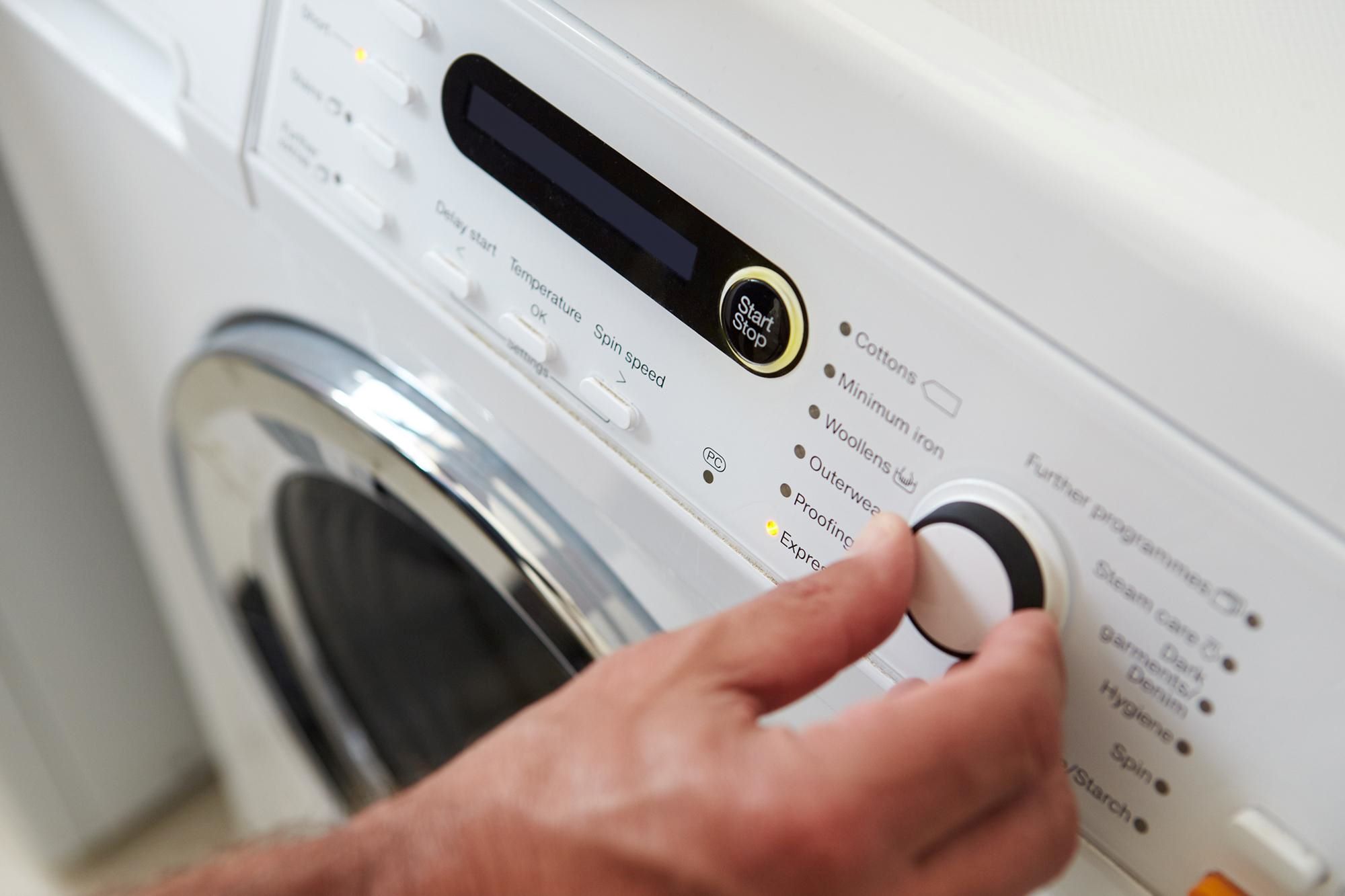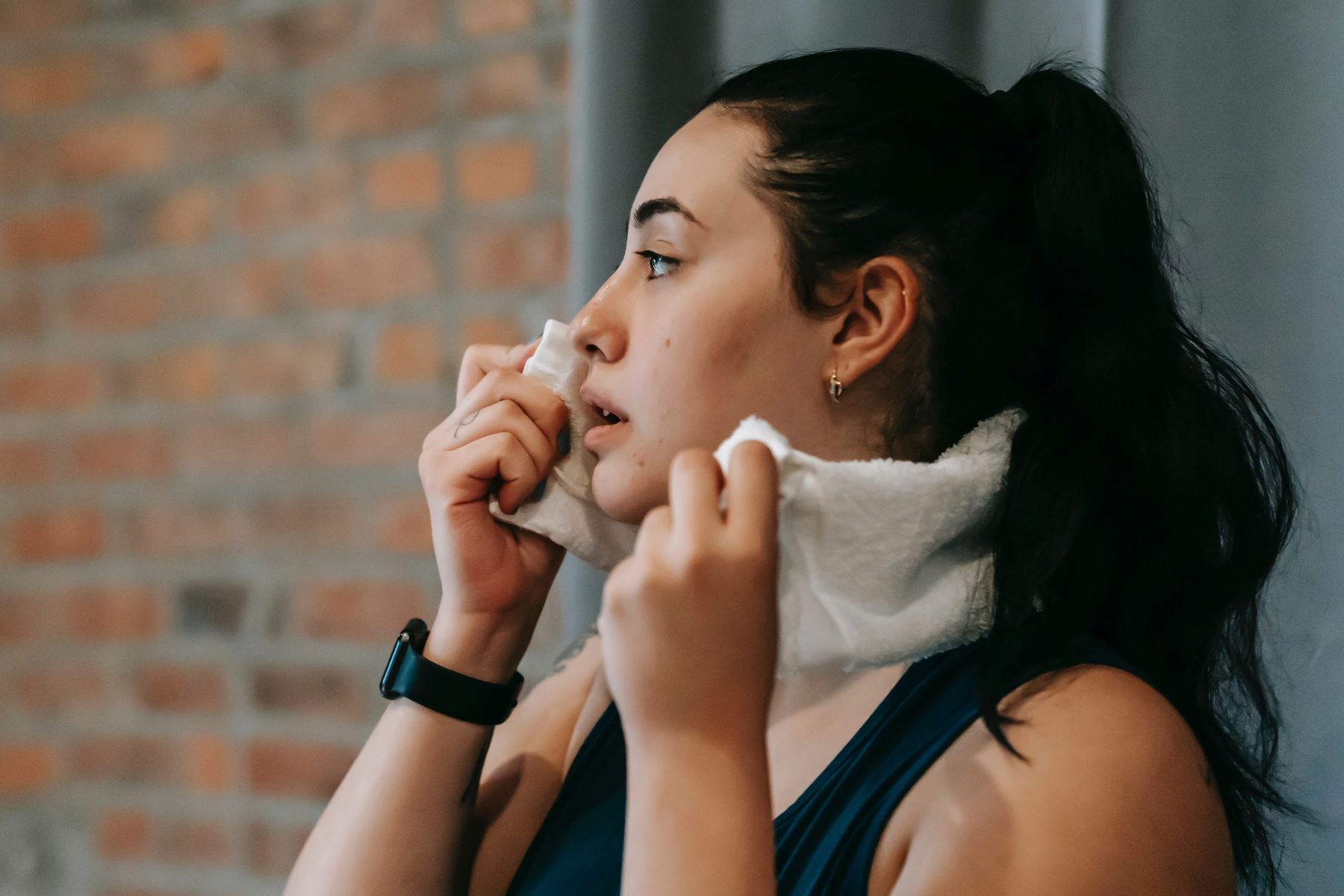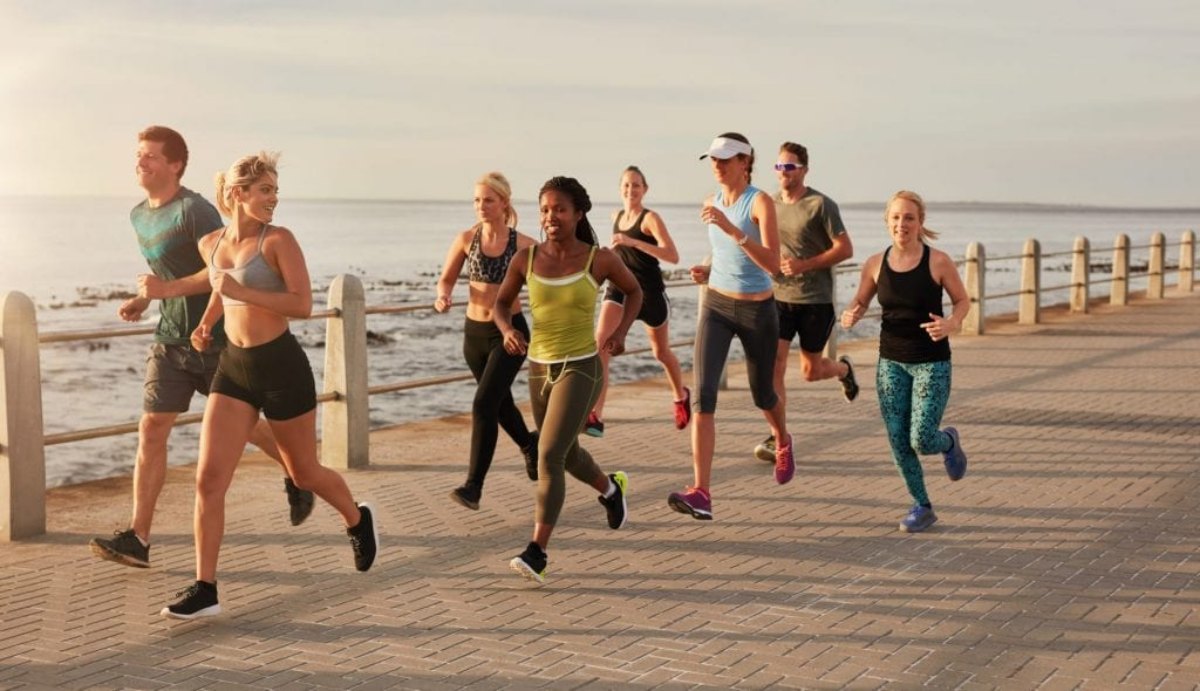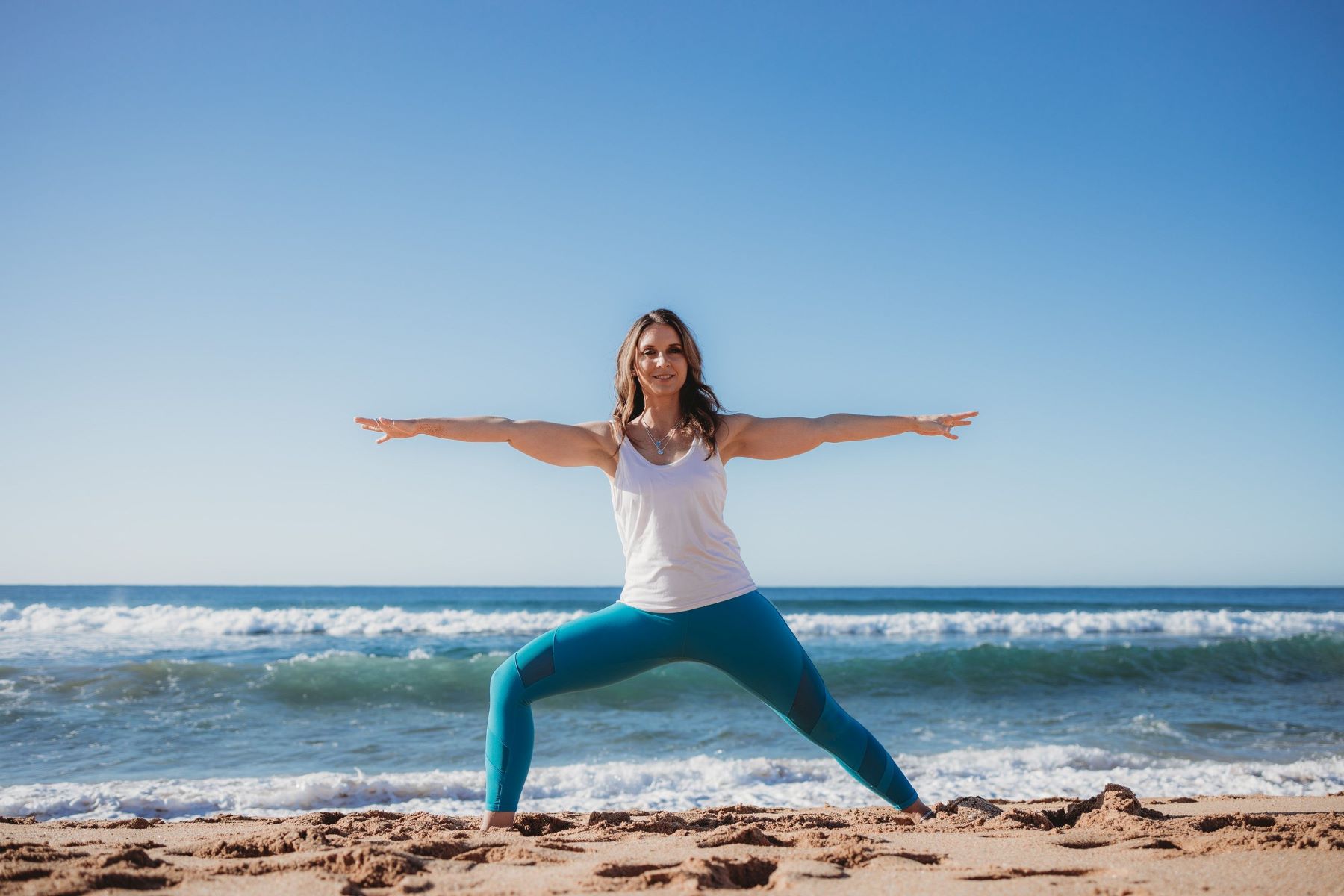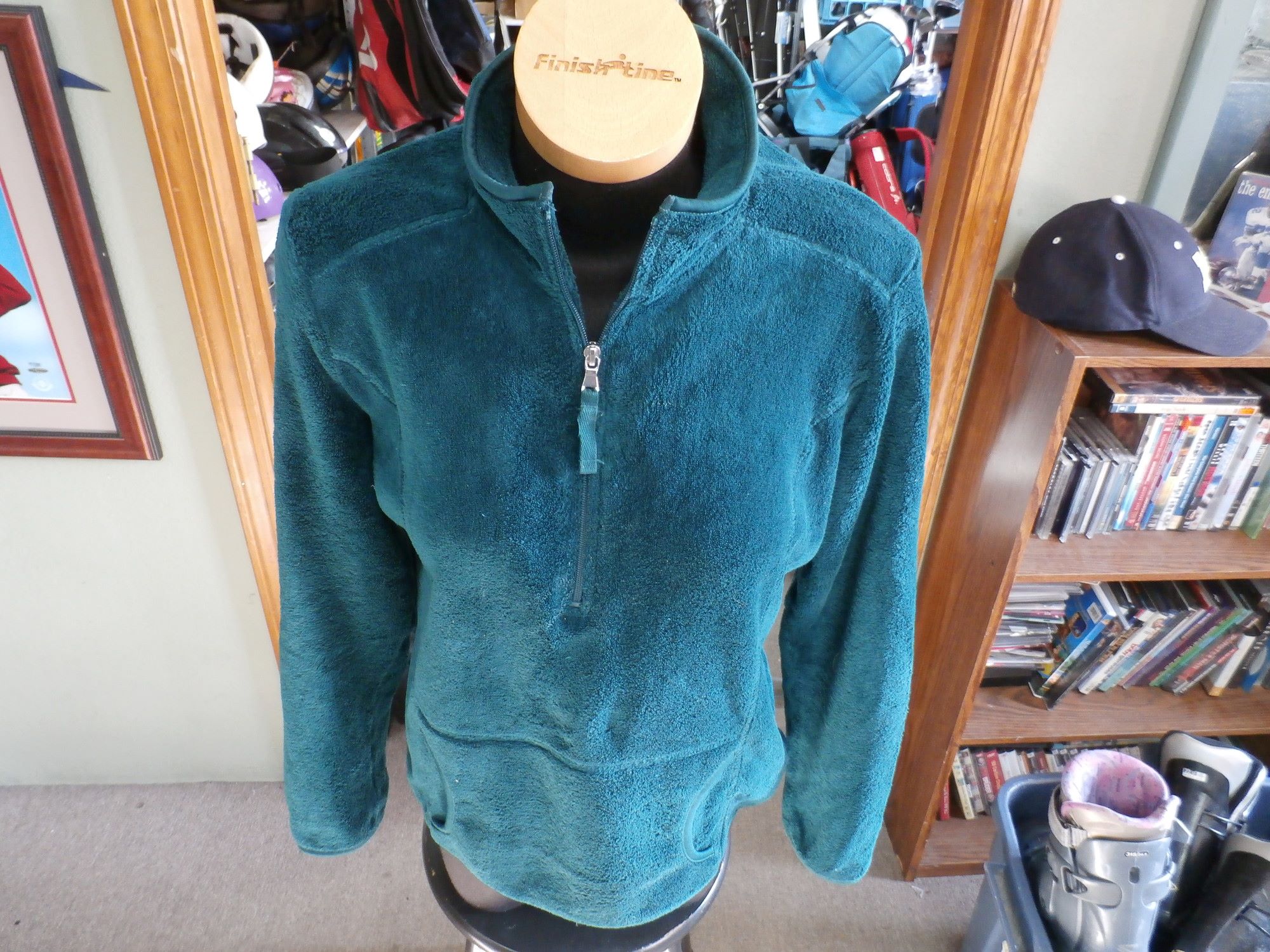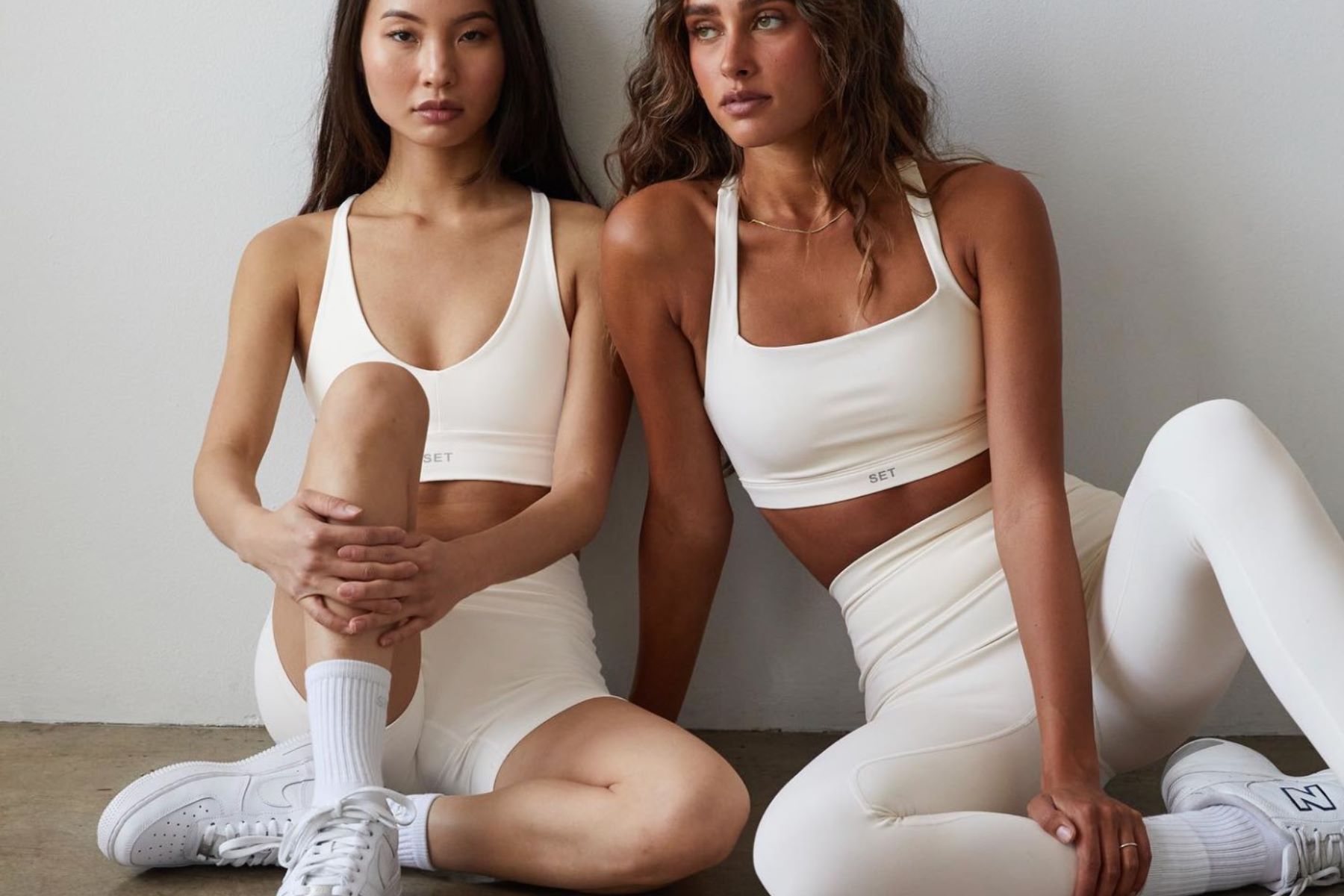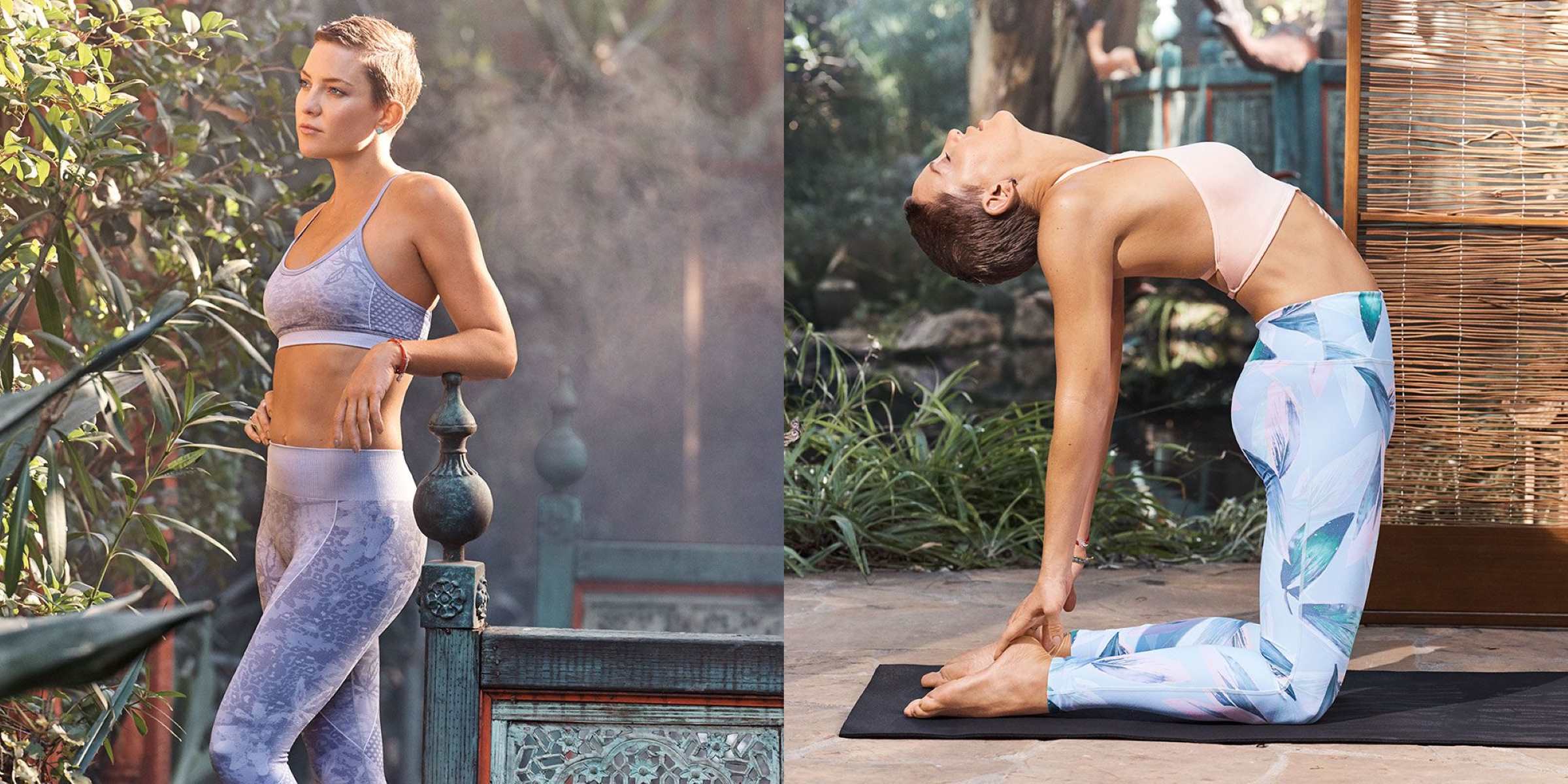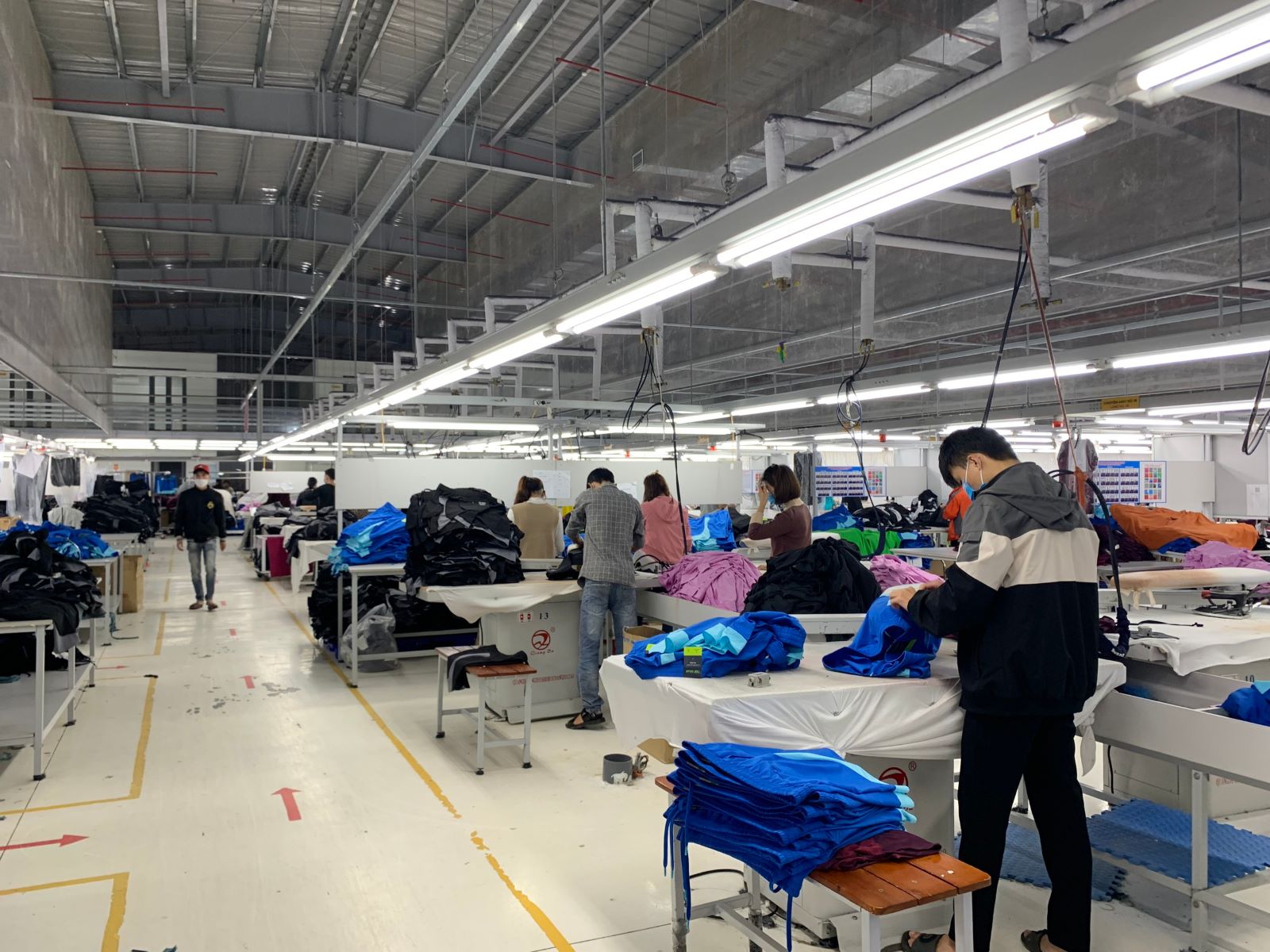

Featured
How To Find An Activewear Manufacturer
Published: August 12, 2023
Looking for an activewear manufacturer? Discover how to find a featured activewear manufacturer that meets your needs and brings your brand to life.
Introduction
Welcome to the world of activewear, where comfort, style, and functionality merge to keep you looking and feeling great during your workouts and active pursuits. If you’ve ever dreamt of starting your own athletic apparel brand or adding a new line of activewear to your existing business, finding the right manufacturer is key to bringing your vision to life. In this guide, we will walk you through the process of finding an activewear manufacturer and help you navigate the various considerations involved.
Researching and selecting the right manufacturer is crucial to the success of your activewear venture. Whether you’re a fitness enthusiast, a fashion entrepreneur, or a business owner looking to expand, finding reliable manufacturers who can bring your designs to fruition is essential. With the rise in demand for activewear in recent years, the market is teeming with options, making it important to conduct thorough research before making any commitments.
While it may be tempting to rush into a partnership with the first manufacturer you come across, taking the time to evaluate their capabilities, communication, pricing, production processes, and quality assurance measures is essential. In this guide, we will delve into the steps involved in finding an activewear manufacturer that aligns with your brand values, production requirements, and budget.
Communication is key when it comes to working with manufacturers. Clear and effective communication ensures that your expectations are understood and met, reducing the likelihood of misunderstandings and delays. Building a strong relationship with your manufacturer from the outset can pave the way for successful collaboration, streamlined production, and the creation of high-quality activewear.
Throughout the process, various factors need to be considered, such as pricing and production considerations, quality assurance and testing, order placement, manufacturing processes, shipping, and logistics. By understanding these aspects and taking them into account, you can navigate the manufacturing process smoothly and efficiently.
The aim of this guide is to provide you with a comprehensive understanding of how to find an activewear manufacturer and equip you with the knowledge and tools to make informed decisions during the entire process. So, let’s dive in and explore the world of activewear manufacturing!
Researching Activewear Manufacturers
When it comes to finding the right activewear manufacturer, thorough research is key. Your goal is to find a manufacturer that not only produces high-quality garments but also aligns with your brand values and production requirements. Here are some steps to help you in your research:
1. Define your requirements: Before starting your search, clearly define your specific needs and requirements. Consider factors such as the type of activewear you want to produce, the quantity you need, and any specific materials or technical specifications.
2. Utilize online platforms: Take advantage of online platforms that connect businesses with manufacturers. Websites like Alibaba, Thomasnet, and Makers Row allow you to search for activewear manufacturers based on location, product type, and production capabilities.
3. Attend trade shows and industry events: Trade shows and industry events provide a valuable opportunity to meet manufacturers face-to-face, see their products, and discuss your requirements in person. These events also allow you to network and gain industry insights.
4. Seek recommendations and referrals: Reach out to fellow business owners or industry professionals for recommendations and referrals. Their firsthand experiences and insights can help you narrow down your options and find reliable manufacturers.
5. Review manufacturer’s websites and portfolios: Visit the websites and online portfolios of potential manufacturers. Look for information regarding their experience, production capabilities, certifications, and any previous work they have done in the activewear industry.
6. Read customer reviews and testimonials: Feedback from other clients can provide valuable insights into a manufacturer’s reputation, reliability, and the quality of their products. Look for reviews on reputable platforms like Google, Yelp, or industry-specific forums.
7. Request samples: Once you have shortlisted a few potential manufacturers, request samples of their work. Evaluating the quality of their products, the durability of the materials, and the attention to detail will help you make an informed decision.
8. Consider production capacity: Assess the manufacturer’s production capacity to ensure they can fulfill your order requirements within your desired timeframe. This includes considering their lead times, production capabilities, and ability to scale up production if needed.
9. Evaluate communication: Communication plays a vital role throughout the manufacturing process. Determine how responsive and clear the manufacturer is in their communication. A manufacturer who understands your needs and can effectively communicate will make the process smoother and more efficient.
By following these steps, conducting thorough research, and carefully evaluating potential manufacturers, you can find the ideal partner to bring your activewear designs to life. In the next section, we will discuss the process of evaluating the capabilities of potential manufacturers.
Evaluating Manufacturer’s Capabilities
Once you have compiled a list of potential activewear manufacturers, it’s time to evaluate their capabilities to ensure they can meet your specific requirements. Here are some key factors to consider during the evaluation process:
1. Production capacity: Assess the manufacturer’s production capacity, including their ability to handle the quantity of activewear you require. Consider factors such as their machinery, workforce, and production timeline to determine if they can meet your deadlines.
2. Technical expertise: Activewear often requires specialized technical knowledge and skills. Make sure the manufacturer has experience in producing activewear and can implement the necessary techniques, such as moisture-wicking fabric, interlocking seams, or compression features.
3. Quality control measures: Inquire about the manufacturer’s quality control processes to ensure they have strict standards in place. Look for certifications like ISO 9001, which indicate their commitment to quality. Additionally, ask if they conduct regular inspections and tests throughout the manufacturing process.
4. Material sourcing: Ask about the manufacturer’s sourcing practices for fabrics and materials. Ensure they use high-quality materials that are durable, comfortable, and suitable for activewear. Consider if they offer eco-friendly or sustainable options if those align with your brand values.
5. Manufacturing techniques: Discuss the manufacturing techniques they employ to produce activewear. Determine if they have the capability to handle your desired fabric types, sewing methods, printing or embroidery techniques, and any other specific requirements you may have.
6. Customization options: If you have unique design elements or customization requirements, make sure the manufacturer can accommodate them. Inquire about their capabilities for adding custom tags, labels, or unique embellishments to your activewear.
7. Prototyping and sampling: Find out if the manufacturer offers prototyping and sampling services. This allows you to see and test the product before proceeding with full-scale production. It’s essential to have clear communication with the manufacturer during this stage to ensure your design vision is accurately translated.
8. Supply chain transparency: Transparency in the supply chain is increasingly important for businesses and consumers. Inquire about the manufacturer’s practices regarding ethical sourcing, fair labor, and sustainability. Understanding their commitment to these values aligns with your brand values and can be a selling point for your activewear.
9. Production flexibility: Consider the manufacturer’s ability to accommodate changes or revisions in your designs. Flexibility in the production process is valuable when you need to make adjustments or introduce new styles or colors based on market demands.
By carefully evaluating the capabilities of potential manufacturers, you can determine if they are the right fit for your activewear brand. In the next section, we will discuss how to effectively communicate with manufacturers to ensure a successful partnership.
Communicating with Manufacturers
Effective communication with manufacturers is essential to ensure a smooth and successful partnership. Clear and open lines of communication will help you convey your expectations, address any concerns, and maintain a collaborative relationship throughout the manufacturing process. Here are some tips for effective communication with activewear manufacturers:
1. Clarify your requirements: Clearly communicate your design specifications, quantity requirements, and any other important details. Provide detailed tech packs or design files that outline your expectations, including measurements, color references, and any specific features or embellishments.
2. Maintain regular communication: Establish regular communication channels with your manufacturer, whether it’s through email, phone calls, or project management tools. Regular updates and progress reports will help you stay aligned and address any issues promptly.
3. Be open to feedback: A good manufacturer will provide valuable insights and suggestions based on their experience. Be open to their feedback and expertise, as they may offer suggestions that can improve the functionality or production efficiency of your activewear.
4. Address concerns promptly: If you have any concerns or questions, address them promptly with your manufacturer. Waiting until the last minute can lead to delays or misunderstandings. Open communication allows issues to be resolved in a timely manner, ensuring the smooth progress of the manufacturing process.
5. Seek clarification when needed: Do not hesitate to seek clarification if there is anything you are unsure about. Misunderstandings can be costly and time-consuming, so it’s better to ask for clarification to ensure everyone is on the same page.
6. Request regular updates: Ask your manufacturer for regular progress updates to stay informed about the production status. This will help you plan accordingly, manage expectations, and address any potential delays or issues that may arise.
7. Be respectful and professional: Treat your manufacturer with respect and professionalism throughout your interactions. Maintain a positive and collaborative attitude, which will help foster a strong working relationship.
8. Visit the manufacturer if possible: If feasible, consider visiting the manufacturer’s facility in person. This allows you to further establish a personal connection, observe their production processes, and gain a better understanding of their capabilities.
9. Document agreements in writing: Whenever there are important agreements or changes made, ensure they are documented in writing. This helps avoid misunderstandings and provides a reference point if any disputes or issues arise later on.
By actively communicating with your chosen manufacturer, you can ensure that your requirements are understood and executed accurately. Clear communication builds trust, establishes a solid working relationship, and ultimately contributes to the successful production of your activewear. In the next section, we will discuss pricing and production considerations to keep in mind.
Pricing and Production Considerations
When working with activewear manufacturers, understanding the pricing and production considerations is crucial to ensure that your business remains financially viable. Here are some key factors to consider:
1. Cost structure: Understand the manufacturer’s pricing structure and how they calculate costs. This may include factors such as the cost of materials, labor, overhead expenses, and any additional services or customization options you require.
2. Minimum order quantities (MOQs): Inquire about the manufacturer’s MOQs. This refers to the minimum number of units you need to order per style or design. MOQs can vary between manufacturers, so ensure they align with your business needs.
3. Cost per unit: Determine the cost per unit of your activewear based on the manufacturer’s pricing. Keep in mind that the cost per unit may vary depending on factors such as fabric type, complexity of design, customization, and embellishments.
4. Volume discounts: Ask about volume discounts that may be available for larger quantities. Manufacturers often offer discounted rates for larger orders, so take advantage of these savings if feasible for your business.
5. Payment terms: Discuss the payment terms with the manufacturer, including the initial deposit required and any subsequent payment milestones. Clarify if they accept different payment methods and determine the timeframe in which payments should be made.
6. Lead times: Inquire about the lead times for production. This refers to the time it takes for the manufacturer to complete your order from start to finish. Ensure that the lead times align with your desired launch timeline or business requirements.
7. Production capacity: Consider the manufacturer’s production capacity in relation to your needs. Determine if they can handle the volume and timelines you require without compromising on quality.
8. Set realistic expectations: Understand that higher-quality activewear may come with a higher price tag. Setting realistic expectations for pricing will help you make informed decisions and ensure that you offer a high-quality product to your customers.
9. Budgeting for additional costs: Factor in any additional costs that may arise during the manufacturing process, such as sampling, shipping, import duties, and quality control testing. This allows you to have a comprehensive understanding of the overall costs involved.
10. Flexibility: Discuss options for flexibility in production. This can include the ability to reorder certain styles or colors based on customer demand, or the flexibility to make small modifications or adjustments to your designs during the production process.
By considering pricing and production factors, you can make informed decisions when selecting an activewear manufacturer and ensure that your business remains financially sustainable. In the next section, we will focus on quality assurance and testing to maintain the high standards of your activewear.
Quality Assurance and Testing
Ensuring the quality of your activewear is crucial to the success of your brand. Quality assurance and testing processes help maintain high standards, deliver products that meet customer expectations, and minimize the risk of defects or issues. Here are some key considerations for quality assurance and testing:
1. Set quality standards: Clearly define your quality standards and communicate them to the manufacturer. This includes criteria such as fabric quality, stitching precision, color consistency, and overall garment durability.
2. Quality control inspections: Discuss the manufacturer’s quality control processes and inspections throughout the production cycle. Inquire about the specific checkpoints where inspections are conducted to ensure that the activewear meets your quality standards.
3. Material testing: Consider testing the materials used in your activewear for quality, performance, and safety. This can include tests for colorfastness, tear strength, moisture-wicking properties, and breathability. Ensure that the materials comply with industry standards and regulations.
4. Fit and sizing: Implement fit and sizing testing to ensure that the activewear fits well and meets the expectations of your target audience. This can involve using fit models, conducting wear tests, or soliciting feedback from customers to fine-tune sizing charts.
5. Performance testing: If your activewear has specific performance features, such as moisture-wicking or compression, consider conducting performance testing to verify their effectiveness. This can involve conducting tests in real-life conditions or utilizing specialized testing equipment.
6. Durability testing: Test the durability of your activewear by subjecting it to simulated wear and stress conditions. This can reveal any weak points in construction, stitching, or fabric quality that could lead to premature wear or damage.
7. Compliance with regulations: Ensure that your activewear adheres to relevant industry regulations and standards, such as those for fabric composition, labeling, and flammability. Verify that the manufacturer is compliant with these regulations to avoid any legal or safety issues.
8. Partner with certified manufacturers: Consider working with manufacturers that have relevant certifications, such as ISO 9001 or Oeko-Tex, which demonstrate their commitment to quality and sustainable practices.
9. Addressing quality issues: Establish a process for addressing any quality issues that may arise during or after production. Communicate with the manufacturer to resolve these issues promptly, whether it involves reworking the garments, securing replacements, or implementing corrective actions.
10. Customer feedback loop: Implement a system for capturing customer feedback on the quality and performance of your activewear. This valuable input can help identify areas for improvement and guide future quality assurance efforts.
By implementing robust quality assurance and testing processes, you can ensure that your activewear meets the highest standards of quality, durability, and performance. In the next section, we will discuss the order placement and manufacturing process and how to navigate it smoothly.
Order Placement and Manufacturing Process
Once you have selected the right activewear manufacturer and finalized all the necessary details, it’s time to place your order and navigate through the manufacturing process. Here are the steps involved in order placement and the manufacturing process:
1. Order confirmation: Ensure that all the details, including quantities, styles, sizes, colors, and any customization options, are accurately conveyed to the manufacturer. Obtain a written order confirmation to confirm the agreement.
2. Deposit payment: Pay the required deposit as per the agreed payment terms to secure your spot in the manufacturer’s production schedule. This initiates the manufacturing process.
3. Sample production and approval: If a sample approval process is part of the manufacturing agreement, closely review the first samples provided by the manufacturer. Evaluate the fit, fabric quality, construction, and any customizations. Provide clear and timely feedback to ensure the final product meets your requirements.
4. Full-scale production: Once the sample is approved, the manufacturer will ramp up production to fulfill your order. Communication with the manufacturer is essential during this phase to ensure production is on track and any issues are addressed promptly.
5. Quality control checks: The manufacturer will conduct quality control checks at various stages of production to ensure that the garments meet the agreed-upon quality standards. Inspections may include fabric inspection, cut panel inspections, and final product inspections.
6. Production timeline: Stay informed about the production timeline and any potential delays that may arise. Address any concerns promptly to avoid disruptions in the manufacturing process and to ensure timely delivery of your activewear.
7. Ongoing communication: Maintain regular communication with the manufacturer to receive updates on production progress and address any questions or concerns that may arise. This open line of communication minimizes the risk of misunderstandings and facilitates a smooth manufacturing process.
8. Manufacturing completion and final payment: Once production is completed, the manufacturer will request the final payment based on the agreed-upon payment terms. Review the final products to ensure they meet your quality standards before making the final payment.
9. Shipping and logistics: Coordinate with the manufacturer to arrange for shipping and logistics. Discuss packaging requirements, shipping methods, and any necessary documentation for customs or international shipments. Clarify any associated costs and timelines involved in the shipping process as well.
10. Quality control upon receiving the shipment: Upon receiving the shipment, conduct a final quality control inspection to confirm that the activewear meets your specifications. Address any issues promptly with the manufacturer to resolve them as efficiently as possible.
By understanding and actively participating in the order placement and manufacturing process, you can ensure that your activewear is produced to your specifications and delivered on time. In the next section, we will delve into the shipping and logistics considerations involved in getting your activewear to its final destination.
Shipping and Logistics
Once your activewear production is complete, the next step is to navigate the shipping and logistics process to get your products to their final destination. Shipping and logistics involve various considerations to ensure a smooth and efficient delivery. Here are key factors to keep in mind:
1. Packaging and labeling: Work with the manufacturer to ensure that your activewear is packaged appropriately for shipping. This includes using suitable packaging materials to protect the garments during transit and clearly labeling the packages with all necessary information.
2. Shipping methods: Determine the most suitable shipping method based on factors such as cost, speed, and reliability. Options may include air freight, sea freight, or courier services. Consider the urgency of delivery and the overall cost-effectiveness of different shipping methods.
3. Shipping documentation: Ensure that all necessary shipping documentation is prepared accurately. This may include commercial invoices, packing lists, export/import documentation, and applicable customs declarations or licenses. Consult with freight forwarders or shipping agents to ensure compliance with international shipping regulations.
4. Track and trace: Utilize track and trace services to monitor the progress of your shipment. This allows you to stay updated on its location and estimated arrival time. Provide this information to your customers or retailers to keep them informed as well.
5. Customs and duties: Familiarize yourself with the customs regulations and duties of the destination country. Ensure that all necessary paperwork and duties are handled properly to avoid any delays or additional costs. Consider collaborating with customs brokers or freight forwarders who specialize in navigating customs procedures.
6. Insurance: Determine if you need shipping insurance to protect your investment during transportation. Evaluate the potential risks and the value of your shipment to decide if insurance coverage is necessary.
7. Delivery timeline: Communicate with the shipping company to obtain an estimated delivery timeline. Consider factors such as distance, customs procedures, and any potential delays that may occur during transit. Set realistic expectations for your customers or retailers regarding the delivery timeframe.
8. Destination handling: Coordinate with the recipient or distribution center at the destination to ensure a smooth handling process. Provide the necessary documentation and instructions to facilitate the efficient reception and distribution of your activewear.
9. Returns and exchanges: Establish a process for handling returns or exchanges, including any associated shipping costs and procedures. Ensure that your customers or retailers are aware of your return policy and provide them with clear instructions for initiating returns or exchanges.
10. Supplier performance evaluation: After the shipment has arrived and the logistics process is complete, evaluate the performance of your shipping and logistics partners. Consider factors such as timeliness, accuracy, and customer service. This evaluation can help you make informed decisions for future shipments.
By carefully managing the shipping and logistics process, you can ensure that your activewear is delivered safely and efficiently to your customers or retailers. In the next section, we will discuss the importance of building long-term relationships with your activewear manufacturers.
Building Long-Term Relationships with Manufacturers
Establishing and nurturing long-term relationships with activewear manufacturers is vital for the growth and success of your business. Building a strong partnership fosters trust, reliability, and collaboration, which can result in better product quality, smoother production processes, and opportunities for growth. Here are some key strategies for building long-term relationships with manufacturers:
1. Effective communication: Maintain open and transparent communication with your manufacturer. Regularly communicate your needs, expectations, and any changes or updates to ensure alignment and avoid miscommunication. Keep the lines of communication open for feedback, concerns, and problem-solving.
2. Consistency and reliability: Be consistent in your orders, commitments, and payments. Consistency and reliability on your part will demonstrate your professionalism and commitment to the partnership. This, in turn, encourages the manufacturer to prioritize your business and provide exceptional service.
3. Provide clear instructions: Ensure that your instructions, specifications, and requirements are clear and concise. This clarity minimizes the risk of errors or misunderstandings during production. Provide detailed tech packs, visual references, and any necessary documentation to guide the manufacturer accurately.
4. Respect and fairness: Treat your manufacturer with respect and fairness. Recognize and appreciate their expertise, effort, and contribution to your business. Pay fair prices for their services and consider negotiating mutually beneficial terms that allow both parties to prosper.
5. Build personal connections: Take the time to build personal connections with your manufacturer. Attend trade shows or industry events where you can meet face-to-face. This personal connection establishes a rapport and fosters a deeper understanding and trust in the partnership.
6. Share your business goals: Share your long-term business goals and vision with your manufacturer. When both parties are aware of each other’s aspirations, they can work together to align their strategies and support each other’s growth. This encourages a collaborative approach and ensures long-term alignment.
7. Collaboration on product development: Involve your manufacturer in the product development process, seeking their suggestions and expertise. Their insights can contribute to enhancing the design, improving production efficiency, and introducing innovative features to your activewear.
8. Provide feedback: Offer feedback on the manufacturer’s performance and product quality. Share your thoughts on areas for improvement and acknowledge the manufacturer’s strengths. A constructive feedback loop helps both parties grow and strengthens the relationship.
9. Long-term contracts and commitments: Consider establishing long-term contracts or commitments with your manufacturer. This signifies your dedication to the partnership and provides stability and security for both parties. Long-term agreements can also provide benefits such as volume discounts and priority production.
10. Continuous improvement: Encourage continuous improvement and innovation within the partnership. Stay updated on industry trends and market demands and share this knowledge with your manufacturer. Embrace feedback from customers and implement improvements based on their needs and preferences.
By focusing on building long-term relationships with your activewear manufacturers, you can create a strong foundation for success in the industry. A mutually beneficial and collaborative partnership ensures the consistent delivery of high-quality activewear and opens doors to future opportunities. In the final section, we will summarize the key points discussed throughout this article.
Conclusion
Finding the right activewear manufacturer is a crucial step in bringing your athletic apparel brand to life or expanding your existing business. Thorough research, effective communication, and careful evaluation of capabilities are essential in selecting the right manufacturer. Pricing and production considerations, as well as quality assurance and testing processes, ensure that your activewear meets high standards of quality and performance. Managing the order placement and manufacturing process, as well as navigating shipping and logistics, is key to delivering your activewear to customers or retailers efficiently.
Building long-term relationships with your manufacturers is a valuable investment that fosters trust, reliability, and collaboration. Effective communication, fairness, and a focus on shared goals contribute to a strong and lasting partnership. Continuous improvement and innovation within the partnership will keep your activewear brand competitive and responsive to market demands.
By following the steps outlined in this guide, you can confidently navigate the process of finding and working with activewear manufacturers. Remember to conduct thorough research, communicate clearly, and prioritize quality throughout the entire manufacturing journey. Building a strong foundation with your manufacturer sets the stage for success and helps you create activewear that customers love and trust.
Now, armed with the knowledge and insights from this guide, it’s time to embark on your journey to find the perfect activewear manufacturer. Best of luck in creating exceptional activewear that inspires and empowers athletes and fitness enthusiasts worldwide!
